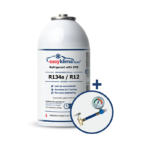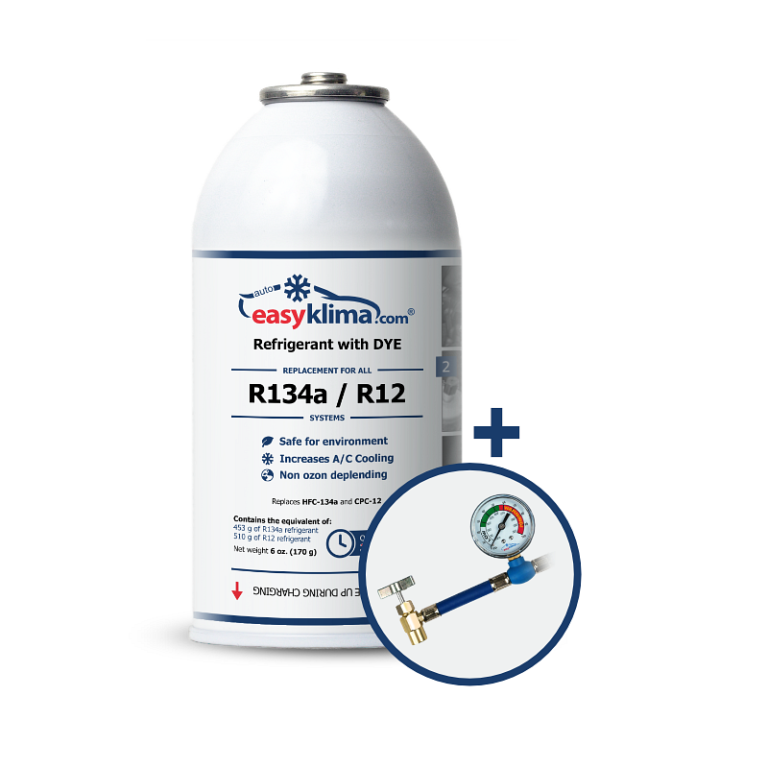Tattoos have long been admired for their artistic expression and personal significance. However, over time, even the most vibrant and meticulously crafted tattoos may start to fade. This phenomenon has piqued the curiosity of both tattoo enthusiasts and scientists alike. In this article, we delve into the intricate process behind why tattoos fade, exploring the underlying factors that contribute to this inevitable occurrence. One of the primary reasons tattoos fade is the natural process of cell turnover within the skin. Our skin is constantly renewing itself through a process called exfoliation, where old skin cells are shed and replaced by new ones.
This turnover affects the appearance of tattoos as the pigmented cells located in the deeper layers of the skin gradually migrate to the surface and are shed. As a result, the ink becomes less concentrated and the tattoo loses its vibrancy over time. Another crucial factor contributing to tattoo fading is the exposure to ultraviolet (UV) radiation from the sun. UV rays can be highly damaging to the skin and can break down the pigments present in the tattoo ink. When the tattooed skin is exposed to sunlight without proper protection, the UV radiation penetrates the layers of the skin, causing the ink particles to scatter and fade. This is especially true for tattoos located on body areas that are consistently exposed to sunlight, such as the arms, legs, or chest. The composition of the tattoo ink itself also plays a role in its fading. Traditional tattoo inks are composed of a combination of organic and inorganic pigments suspended in a carrier solution.
Over time, these pigments can degrade or break down due to various factors such as exposure to sunlight, the body’s immune response, or the migration of ink particles within the skin. Inorganic pigments, like those based on iron oxide, tend to hold up better over time compared to organic pigments. However, even inorganic pigments can undergo some degree of fading and discoloration over the years. Furthermore, the skill and technique of the tattoo artist can impact how well a tattoo withstands the test of time. A poorly executed tattoo may not penetrate the skin evenly or deeply enough, leading to uneven distribution of ink and a higher likelihood of fading. Additionally, improper aftercare following the tattooing process can contribute to fading. Failing to keep the tattoo clean, moisturized, and protected from excessive sunlight during the healing process can hinder its longevity. To minimize tattoo fading and maintain its vibrancy, several preventive measures can be taken. Firstly, protecting the tattooed area from excessive sun exposure is paramount. Applying a broad-spectrum sunscreen with a high sun protection factor (SPF) and seeking shade whenever possible can significantly reduce the fading caused by UV radiation. Wearing clothing that covers the tattooed area can also provide an additional layer of protection. Secondly, proper tattoo aftercare is essential for optimal healing and longevity.
Following the tattoo artist’s instructions regarding cleaning, moisturizing, and avoiding activities that may irritate or damage the tattooed skin is crucial. Using gentle, fragrance-free soaps and moisturizers recommended by professionals can help preserve the tattoo’s colors and minimize fading. Lastly, periodic touch-ups can revitalize a faded tattoo and restore its original glory. Tattoo artists can retouch and re-ink areas that have experienced significant fading, replenishing the colors and improving overall appearance. Regular touch-ups can ensure that the tattoo remains vibrant and true to its original design. In conclusion, the fading of tattoos is a natural process influenced by several factors. Cell turnover, UV radiation, the composition of tattoo ink, tattooing technique, and aftercare all contribute to the eventual fading of tattoos. By understanding these factors and taking preventive measures such as sun protection and proper aftercare, individuals can prolong the lifespan of their tattoos and enjoy their beauty for years to come. Additionally, staying informed about advancements in tattoo ink technology and seeking out experienced tattoo artists who prioritize longevity can also contribute to maintaining the vibrancy of tattoos for an extended period. Remember, while some fading is inevitable, proper care and attention can help slow down the process and ensure that your tattoo remains a cherished piece of art for years to come.
What causes tattoos to fade over time?
Tattoos have been a popular form of body art for centuries, but over time, they tend to fade. This gradual fading of tattoos is a natural process influenced by various factors. Understanding the mechanisms behind tattoo fading can shed light on why this phenomenon occurs. One of the primary causes of tattoo fading is the natural turnover of skin cells. The skin undergoes a continuous process of renewal, where old cells are shed, and new cells take their place.
Tattoos are typically placed in the dermis, the second layer of skin, which contains specialized cells called fibroblasts. These fibroblasts produce collagen, a structural protein that helps support the skin’s integrity. As time passes, the turnover of skin cells affects the appearance of tattoos. The constant shedding of dead skin cells gradually removes the ink particles trapped in the dermis. Additionally, as new skin cells replace the old ones, the tattoo pigments become less concentrated, leading to a faded appearance. Ultraviolet (UV) radiation from the sun is another significant factor contributing to tattoo fading. UV radiation can break down the tattoo pigments and cause them to disperse. Sun exposure over time can cause the colors in a tattoo to fade and lose their vibrancy. This is especially true for tattoos located in areas of the body that are regularly exposed to sunlight.
Moreover, the quality of the tattoo ink used can impact its longevity. High-quality tattoo inks contain a higher concentration of pigments and have better color retention properties. On the other hand, low-quality inks may contain a lower pigment concentration or inferior ingredients, which can result in faster fading. The skill and technique of the tattoo artist also play a role in tattoo longevity. A poorly executed tattoo may not penetrate the dermis deeply enough, causing the ink to be closer to the skin’s surface. As a result, the ink is more susceptible to the wear and tear of daily activities, leading to faster fading. Individual factors, such as an individual’s skin type and lifestyle, can also influence tattoo fading. People with fair skin tend to experience more noticeable fading compared to those with darker skin tones. Additionally, activities that cause frequent friction or exposure to chemicals, such as swimming in chlorinated pools or using harsh skincare products, can contribute to tattoo fading. In recent years, technological advancements in tattooing have aimed to address the issue of fading. For example, some tattoo artists now use micro-pigmentation techniques that deposit pigments closer to the skin’s surface.
While these techniques may result in a more temporary tattoo, they can provide an option for individuals who prefer less permanent body art. To minimize tattoo fading, it is crucial to take proper care of the tattooed area. Protecting tattoos from excessive sun exposure by applying sunscreen and wearing protective clothing can help maintain their color intensity. Additionally, keeping the skin moisturized and avoiding abrasive activities can also contribute to preserving the tattoo’s appearance. In conclusion, tattoo fading is a natural process influenced by various factors. The turnover of skin cells, exposure to UV radiation, ink quality, tattooing technique, and individual factors all contribute to the gradual fading of tattoos over time. Understanding these factors can help individuals make informed decisions about tattoo placement, aftercare, and maintenance to prolong the longevity and vibrancy of their body art.

How can you prevent tattoo fading?
Tattoos are a popular form of self-expression and body art, but over time, they can gradually fade, losing their vibrancy and clarity. Tattoo fading can be caused by various factors, including sun exposure, improper aftercare, aging, and low-quality ink. However, by following proper preventative measures, you can extend the longevity and visual appeal of your tattoos. In this article, we will explore effective techniques and tips to help you prevent tattoo fading.
- Sun Protection:
One of the primary causes of tattoo fading is prolonged exposure to ultraviolet (UV) radiation from the sun. UV rays can break down the pigments in the skin, leading to color fading and distortion. To protect your tattoo, it is crucial to shield it from direct sunlight. Here are some methods to consider:a. Clothing: Whenever possible, cover your tattooed area with clothing, especially when the sun is at its strongest. b. Sunscreen: Apply a broad-spectrum sunscreen with a high sun protection factor (SPF) to your tattooed skin. Look for sunscreens that specifically mention UVA and UVB protection. Reapply regularly, especially if you are spending an extended period outdoors. c. Sun-protective film: Consider using specialized sun-protective films designed for tattoos. These transparent films provide an additional layer of UV protection without interfering with the appearance of your tattoo. - Proper Aftercare:
Following the correct aftercare routine is vital in ensuring the longevity of your tattoo. Proper healing minimizes the risk of complications and helps maintain the ink’s integrity. Here are some essential aftercare tips:a. Cleaning: Gently wash your tattooed area with a mild, fragrance-free soap and lukewarm water. Pat it dry with a clean, soft cloth or let it air dry. b. Moisturizing: Apply a thin layer of tattoo-specific moisturizer or fragrance-free lotion to keep the skin hydrated. Avoid petroleum-based products, as they can pull out the ink. c. Avoiding irritants: Protect your tattoo from harsh chemicals, such as chlorine in swimming pools, excessive sweating, and abrasive materials that can cause irritation and fading. - High-Quality Ink and Professional Tattooing:
The quality of the ink used and the skills of the tattoo artist play a significant role in the longevity of your tattoo. Opting for professional tattoo studios with experienced artists who use high-quality inks can help prevent premature fading. Inferior inks may contain low-quality pigments that break down quickly, resulting in color fading. Research tattoo artists and studios before getting inked to ensure their reputation and expertise. - Hydration and Skin Care:
Healthy skin acts as a canvas for your tattoo, and well-nourished skin promotes better ink retention. Consider the following practices:a. Stay hydrated: Drink an adequate amount of water daily to keep your skin hydrated from within. b. Moisturize regularly: Use fragrance-free moisturizers and skin care products to maintain the skin’s moisture balance. c. Avoid excessive exfoliation: Rough scrubbing or using abrasive products can cause the tattooed skin to fade prematurely. Be gentle while exfoliating and avoid the tattooed area. - Touch-ups and Maintenance:
Even with proper care, tattoos may naturally fade over time. Scheduling periodic touch-ups with a skilled tattoo artist can help refresh the colors and maintain the overall appearance of your tattoo. Regular touch-ups ensure that any faded areas are addressed promptly, keeping your tattoo looking vibrant for years to come.

What are the factors that contribute to tattoo fading?
Tattoos have been a significant form of self-expression for centuries, with the artistry and creativity etched permanently onto the skin. However, over time, tattoos may undergo fading, resulting in a loss of vibrancy and sharpness. Understanding the factors that contribute to tattoo fading is crucial for individuals seeking long-lasting body art. In this article, we will delve into the technical aspects behind tattoo fading and explore the various factors that contribute to this phenomenon.
- Pigment Degradation:
The primary cause of tattoo fading is the degradation of pigments present in the skin. Tattoo inks are composed of various pigments, each with its own chemical properties. Over time, exposure to ultraviolet (UV) radiation, both from the sun and artificial sources, leads to the breakdown of pigments. UV radiation initiates a process called photodegradation, causing the pigments to fragment into smaller molecules that are more easily cleared away by the immune system. - Ink Particle Size:
Another crucial factor affecting tattoo fading is the size of the ink particles used. Smaller ink particles tend to disperse more easily over time, leading to a loss of color intensity. Larger particles, on the other hand, tend to stay in place more effectively, resulting in a more long-lasting tattoo. The choice of ink particle size by the tattoo artist plays a significant role in determining the eventual fading of the tattoo. - Skin Regeneration:
The natural process of skin regeneration also contributes to tattoo fading. The outer layer of our skin, the epidermis, undergoes continuous renewal as old skin cells are shed and replaced by new ones. As new skin cells form, they gradually push the inked cells closer to the surface, causing the tattoo to fade. The rate of skin cell turnover, which varies from person to person, affects the speed at which tattoo fading occurs. - Location on the Body:
The location of a tattoo on the body can influence its rate of fading. Areas exposed to more friction, such as hands and fingers, or subjected to constant stretching and movement, like joints, tend to experience faster tattoo fading. These factors disrupt the integrity of the ink pigments, leading to quicker degradation. In contrast, tattoos placed on less mobile areas, such as the back or chest, tend to fade at a slower rate. - Lifestyle and Environmental Factors:
Various lifestyle and environmental factors can accelerate tattoo fading. Continuous exposure to UV radiation, either through prolonged sun exposure or tanning beds, speeds up the degradation of pigments. Additionally, frequent swimming in chlorinated or saltwater pools, excessive sweating, and the use of harsh skincare products containing chemicals can also contribute to tattoo fading. Proper aftercare and sun protection can mitigate these effects.

Can sunlight and UV exposure accelerate tattoo fading?
Can Sunlight and UV Exposure Accelerate Tattoo Fading?Tattoos have long been a popular form of self-expression, with individuals adorning their bodies with intricate designs and meaningful symbols. However, over time, tattoos tend to fade, losing their vibrant colors and sharpness. While various factors contribute to tattoo fading, one significant element to consider is the impact of sunlight and ultraviolet (UV) exposure. Sunlight and UV radiation can indeed accelerate the fading process of tattoos. To understand this phenomenon, it is crucial to delve into the technical aspects of tattooing and how the skin reacts to UV radiation.
Tattoos are created by injecting pigments into the dermis, the second layer of the skin. These pigments are designed to be long-lasting, but they are not immune to the effects of external factors. UV radiation, particularly in the form of UVA and UVB rays, can penetrate the skin and interact with the tattoo pigments. UVA rays, which account for the majority of UV radiation reaching the Earth’s surface, can deeply penetrate the skin. They are known to break down collagen fibers, leading to skin aging and the breakdown of tattoo pigments. UVA rays are present year-round, regardless of the weather conditions, meaning that even on cloudy or overcast days, they can still reach the skin and affect tattoos. UVB rays, on the other hand, are more intense and are primarily responsible for sunburns. They have a shorter wavelength and do not penetrate the skin as deeply as UVA rays. Nonetheless, UVB rays can still contribute to tattoo fading by causing damage to the top layers of the skin where the tattoo is located.
When UV radiation interacts with tattoo pigments, it can cause them to break down or alter their chemical composition. This process, known as photodegradation, leads to the fading of colors and the blurring of fine details in the tattoo design. Darker colors, such as black and blue, tend to be more resistant to fading than lighter shades, but they are not entirely immune to the effects of UV exposure. Additionally, prolonged or excessive exposure to sunlight and UV radiation can also cause the skin to become dry and dehydrated. This can further contribute to tattoo fading as the skin loses its ability to retain moisture, leading to a dull and lackluster appearance. Protecting tattoos from sunlight and UV exposure is crucial to minimize fading and preserve their longevity. There are several effective measures individuals can take to shield their tattoos from the harmful effects of UV radiation. These include:
- Sunscreen: Applying a broad-spectrum sunscreen with a high sun protection factor (SPF) to exposed tattoos can help create a barrier against UV rays. It is important to choose a sunscreen that offers both UVA and UVB protection and to reapply it regularly, especially when spending extended periods outdoors.
- Clothing: Wearing protective clothing, such as long-sleeved shirts or pants, can provide an additional layer of defense against UV radiation. Opting for tightly woven fabrics and darker colors can offer better sun protection.
- Shade: Seeking shade whenever possible, especially during peak sun hours when UV radiation is most intense, can significantly reduce the amount of UV exposure your tattoos receive.
- UV-protective films: Some specialty products, such as UV-protective films or tattoo-specific aftercare products, can help shield tattoos from UV radiation. These films are typically transparent and can be applied directly to the tattooed area, offering an extra layer of protection.
By taking these precautions, individuals can minimize the detrimental effects of sunlight and UV exposure on their tattoos. While some degree of fading is inevitable over time, responsible sun protection practices can significantly prolong the vibrancy and clarity of tattoos. In conclusion, sunlight and UV exposure can accelerate the fading process In conclusion, sunlight and UV exposure can accelerate the fading process of tattoos by interacting with the tattoo pigments, causing photodegradation and compromising the integrity of the design. Therefore, it is essential for tattoo enthusiasts to prioritize sun protection measures to preserve the vibrancy and longevity of their tattoos.

Are there any effective methods for tattoo restoration or touch-ups?
Tattoos are a popular form of self-expression and art, but over time, they can fade or lose their vibrancy due to various factors. Fortunately, advancements in tattoo restoration and touch-up techniques have emerged, providing effective methods to rejuvenate and enhance tattoos. In this article, we will explore some of these methods, their technical aspects, and their significance in the world of tattoo artistry. One of the primary causes of tattoo fading is the natural process of ink dispersal within the skin’s layers over time. Additionally, exposure to sunlight, aging, and improper aftercare can contribute to the degradation of a tattoo’s appearance. To counteract these effects, tattoo restoration and touch-up methods have been developed to restore and enhance the original tattoo design.
One notable method for tattoo restoration is known as color revitalization. This technique involves reinvigorating the tattoo’s colors by adding new ink to areas that have experienced significant fading. Using specialized tattoo machines, skilled tattoo artists carefully reintroduce pigments into the tattooed skin, revitalizing its vibrancy. By strategically selecting and blending pigments, the artist can match the original color scheme or even introduce new elements to enhance the overall aesthetic. Another method commonly employed for tattoo touch-ups is called re-lining. Over time, the outlines of a tattoo can become less defined or blur, diminishing the tattoo’s overall clarity. Re-lining involves reinforcing the tattoo’s outlines by using a fine needle and precise techniques to redraw and redefine the original lines. This process requires expertise and a steady hand to achieve accurate results without altering the original design. Tattoo restoration and touch-ups also encompass techniques aimed at correcting imperfections or addressing specific issues within a tattoo. One such technique is called “color correction. ” This method is employed when a tattoo has experienced undesirable color changes or when the original color choice does not suit the client’s preferences.
Through careful analysis and color theory, tattoo artists can apply corrective pigments to balance out or neutralize unwanted tones, resulting in a more aesthetically pleasing appearance. In some cases, tattoos may require more extensive restoration due to severe fading, scarring, or damage. In such instances, tattoo artists may opt for a technique known as “tattoo overlay” or “cover-up. ” This involves designing a new tattoo that strategically incorporates elements of the existing tattoo, effectively concealing or transforming it. The process requires meticulous planning, creative design skills, and precise execution to ensure that the cover-up tattoo seamlessly integrates with the original artwork while providing the desired outcome. It’s worth noting that not all tattoos are suitable for restoration or touch-up. Factors such as the age of the tattoo, the quality of the original work, and the client’s skin condition play crucial roles in determining the feasibility and success of the restoration process. Consulting with an experienced tattoo artist or restoration specialist is essential to assess the possibilities and limitations for each individual case. In conclusion, tattoo restoration and touch-up methods have revolutionized the field of tattoo artistry, providing effective means to revive, enhance, and correct existing tattoos. From color revitalization to re-lining, these techniques require a combination of technical skill, artistic expertise, and an understanding of the client’s needs. By employing these methods, tattoo artists can breathe new life into faded tattoos, ensuring their longevity and visual appeal.






















I like how you explained complex concepts with ease. Now I am able to understand the topic better.